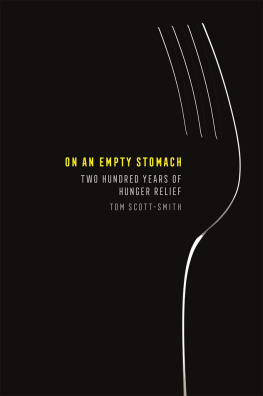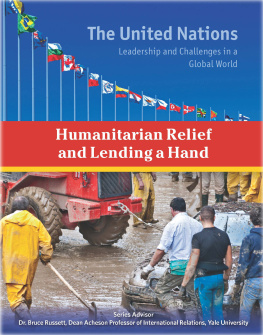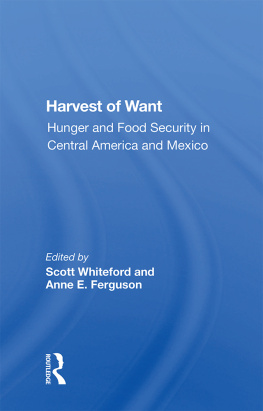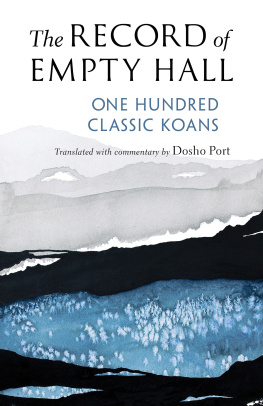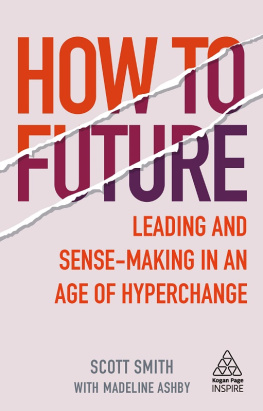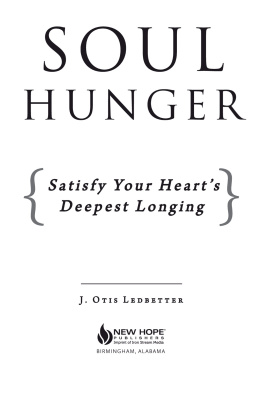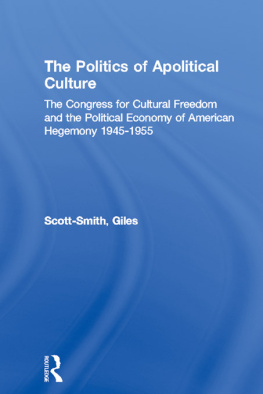Preface
I began this book in 2012 while observing a large feeding operation in South Sudan. I had been studying the daily lives of aid workers and had become particularly interested in how humanitarians deal with large numbers of hungry people. With so much scholarly work on the international politics of relief, my aim was to focus on the microlevel practices, and in the refugee camps of South Sudan I found a fascinating world of objects and activities, rituals and regulations. Every morning, just as the sun came up, I accompanied an army of aid workers as they dispersed across the landscape, measuring peoples bodies with a brightly colored strip of plastic tape. I watched as they sorted refugees into categories, determining their eligibility for food. I took part in enormous food distributions, in which mixtures of soya, corn, oil, and vitamins were handed out in plastic bags. I then began to trace the food that had been manufactured for this purpose, examining how it was stored, packed, mixed into a precise nutritional balance, and then reconstituted over cooking fires.
This book emerged from a question that kept returning to me during those long summer months in 2012. After observing the feeding schemes and reading the humanitarian handbooks, I began to wonder why aid agencies managed hunger in such standardized and specific ways. I knew that relations between people, society, and food were extraordinarily complex; I knew that hunger was tied into what Audrey Richards long ago called a nutritional system: an intricate web that extended from cultural beliefs to agricultural practices, mealtime rituals to the division of labor. In South Sudan, however, aid workers were using procedures that focused very narrowly on nutrients and the body. They concentrated the human need for food into a table of nutritional requirements that largely abstracted the complex role of politics, culture, and society, and presented hunger as a technical issue.
In the anthropological spirit of questioning the taken for granted, I began asking aid workers why they followed these standardized procedures. Many of their responses surprised me. My interlocutors knew very well that food systems are socially embedded and that diet is culturally formed, but they argued that such concerns were often irrelevant in emergencies. If people were starving, they said, then aid agencies had to get nutrients into bodies as quickly and efficiently as possible and to do this they followed procedures that emerged from decades of nutritional discovery, transforming hunger into a biological problem. Such an approach, I was told, was more rational and efficient. It had been tested over time, proved through experience, and could alleviate suffering more effectively.
After leaving South Sudan I began exploring these nutritional practices in greater detail, and it soon became clear that the narrative of progress was, at best, simplistic. Many of these systems had been widely contested, based on ideas of the empty stomach that were themselves culturally embedded and historically contingent. Beneath the science, in other words, there was a shifting debate, a range of disputes concerning the right procedures for feeding people and the correct foods for disasters. By the time I sat down to write this book, therefore, my anthropological study had become more historical. It still emerged from an anthropological starting pointquestioning why people did things in certain waysbut it proceeded through historical methods. The resulting book is a history of the present: an exploration of how humanitarian strategies for managing hunger have changed profoundly over the last two hundred years.
My central argument can be expressed relatively simply: that humanitarian practices, even at the most technical level, reflect the social and political conditions of the age. The way humanitarians feed hungry people, in other words, is influenced by prevailing patterns of power, systems of thought, and approaches to governance. Foucaults work has certainly been useful in this analysis, helping make greater theoretical sense of the way that starvation and its management have changed, but I have also drawn inspiration from the more sprightly and lightly theorized combinations of history and anthropology that may be known to more general readers. Sidney Mintzs magnificent study of sugar, Sweetness and Power , is one prominent example, but James Vernons more traditional historical work on hunger has also been an important reference point.
A Note on Terminology
Perhaps the biggest challenge in writing this book has been coming up with a definition of humanitarianism. This, after all, is a notoriously capacious term, which has been used to describe activities as diverse as peacekeeping, state building,
Without wanting to delve into definitional debates in too much depth, this book has been guided by the idea that humanitarianism is first and foremost a set of practices . It should not be defined by its intentions and ethical motivations, which are inevitably compromised and complex; nor can it be defined by its concrete outcomes, since relieved suffering is so often ambiguous and contested. Humanitarianism, to put it simply, is characterized by what people do in its name. It is a set of standardized activities, which can be relatively stable at any particular historical moment, while shifting a great deal over time.
Rather than applying contemporary standards to the past, therefore, this book traces techniques that were promoted as humanitarian in each period. This avoids anachronism while allowing the connection of disparate events into a longer-term narrative. Colonial interventions and civilizational improvements were, in the 1920s, widely considered humanitarian. Thirty years before that even animal rights and vegetarianism were humanitarian concerns. After World War II the word humanitarianism described large-scale transformations as well as emergency relief. It is only relatively recently, therefore, that the term has been distinguished from development to describe the short-term relief of basic needs.
Ideas of hunger and its treatment have also changed profoundly over the last two hundred years, as will become clear in this book. In the 1920s the idea of ending starvation was connected with attempts to transform the savage diet. Fifty years before that the treatment of hunger was directed at the industrial urban underclass, including the establishment of semipermanent soup kitchens in the slums. After World War II humanitarianism embraced large-scale schemes of modernist improvement, bringing a whole new set of technological ideas to bear on the problem of hunger. In light of these changes, one cannot apply a narrow and contemporary standard of what counts as humanitarianism to a lengthy historical story.
In addition to humanitarianism, there are some other terms that require explanation. In particular, readers will notice that I often reach for the term hunger when perhaps a more precise term is more appropriate. Hunger generally refers to a variety of situations that are caused by insufficient food: it is an expansive word that can indicate many situations and conditions. Malnutrition , meanwhile, is a more precise technical term, which refers to a biochemical condition: it is often treated as synonymous with undernutrition, but it also embraces overnutrition and is intrinsically linked with the rise of nutritional standards. Starvation is another term entirely, which refers to a situation where hunger begins to threaten life and the lack of food causes physical breakdown. I use all of these terms in this book, but I most often reach for hunger because it is the most inclusive way to describe both social and physical processes. Unlike many other termsfor example, malnutritionit has not yet been fully colonized by medical discourse and practice.

